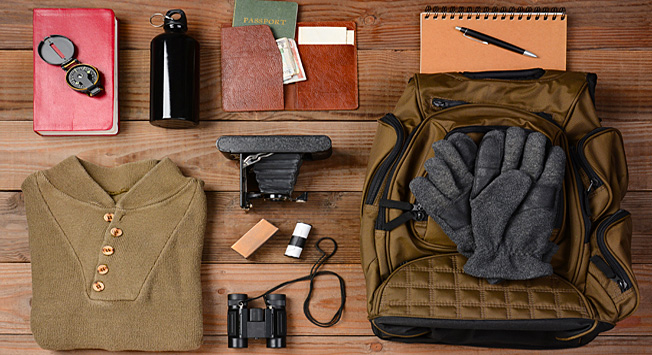
1. Boots or valenki?
Having a picture taken while wearing valenki (warm felt boots that are a popular souvenir among tourists) and an ushanka hat (fur or felt hat with ear-flaps) against the background of the Kremlin is perfect for your Facebook profile picture, but this outfit is hardly comfortable for walking around the city. Snow removal salts line the streets and roads of Russian cities in winter, so for long walks you should wear solid waterproof boots with thick soles. However, if you go to the Russian countryside, valenki are truly wonderful companions for making your way through powdery snow.
2. Thermos with tea or vodka?
It's far from the truth that all Russians keep themselves warm in winter by drinking vodka. For many Russians the best way to stay warm outside is to take a thermos filled with hot tea. This device is ideal for travels around Russia. The thermos became the Soviet travelers best friend due to its ability to preserve heat for up to five hours. Besides it's hard to match the pleasure of an improvised tea party when you sip a hot drink directly on Red Square. Today a thermos can be replaced by a thermo mug or a tumbler filled with hot coffee or homemade mulled wine. Note: the consumption of alcoholic beverages in public places in Russia is forbidden.
3. A hat or a hood?
The answer is obvious. Put on everything you have! A hat, a hood, your gloves and don’t forget warm socks. Get ready for the cold, but don't forget to look at the weather forecast. Winter in Russia is unpredictable – after a month of freezing temperature and blizzards, a thaw period with rains can begin, or worse – there might be a cyclone storm accompanied by strong winds and icy hail.
4. A money belt or a wallet?
Money belts are widely recommended for helping tourists keep their money safe. However, in Russia such belts are only worn by older foreign tourists. There are no more pick-pocketers in Russian cities than there are in Europe and money can be safely stored with a little common sense and ordinary caution. Keep your cash in a wallet and store it in your coat’s inside pocket that zips up. Incidentally Russian money has become even friendlier as the value of the Russian ruble as compared to foreign currency has fallen by half. You will be pleasantly surprised to find out what you can buy in Russia for just $100.
5. Glossy magazine or Dostoyevsky?
Huge distances are a source of pride for every Russian and a considerable problem for every traveler. Depending on your destination you can travel by taxi, suburban train, long distance train or plane, but every time you move you will spend more time in transit than you are probably used to. Spend this time wisely by downloading an audiobook on Russian sights or buy a volume of Tolstoy, Dostoyevsky or Chekhov – they make great companions on the road.
6. Toilet paper...are you kidding me?
In one blog an author recommends bringing toilet paper. The author explains that Russian public toilets often have no toilet paper or paper towels. This tip seems a bit outdated as most large Russian cities in recent years have reached the level of European ones in terms of the number of restaurant chains and the quality of services there and since then public toilets radically improved. People will look at you a bit funny if a roll of toilet paper accidentally drops out of your backpack while you are in the middle of the luxurious interiors of the Hermitage Museum. On the other hand, hygiene is always important when you are on the go in any corner of the world, so it’s a wise idea to keep napkins and hand sanitizers in your backpack.
All rights reserved by Rossiyskaya Gazeta.
Subscribe
to our newsletter!
Get the week's best stories straight to your inbox